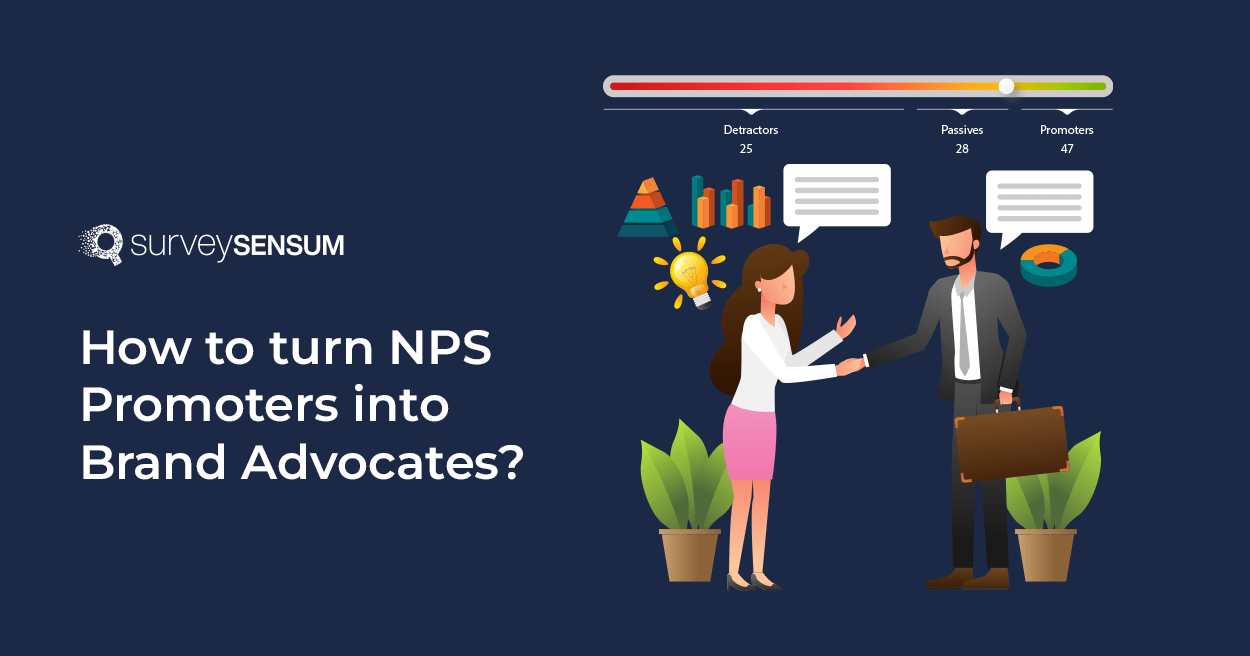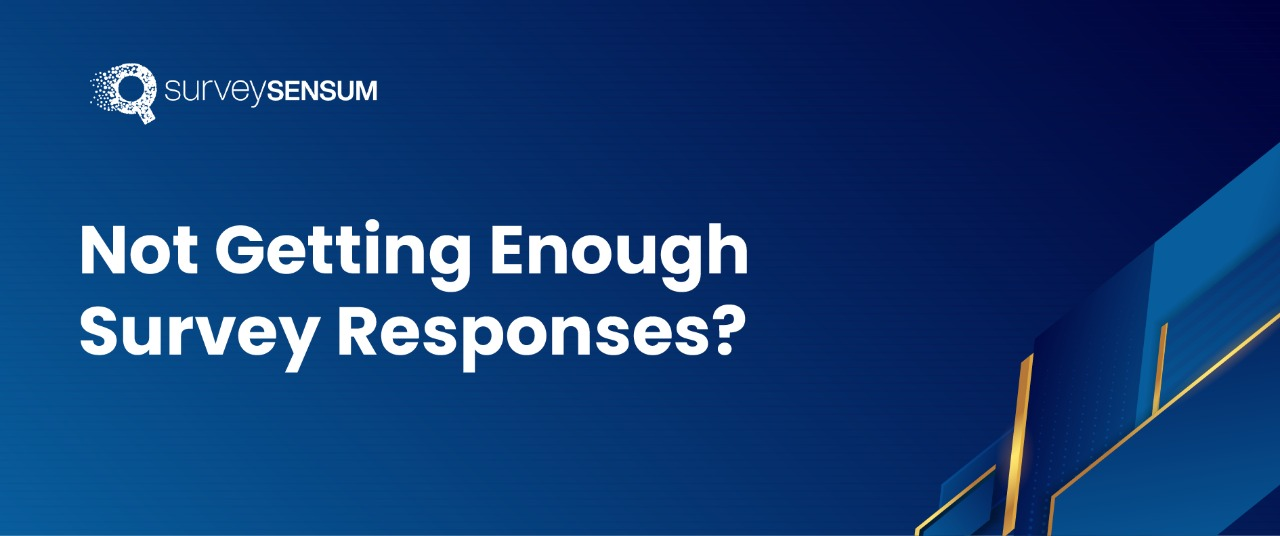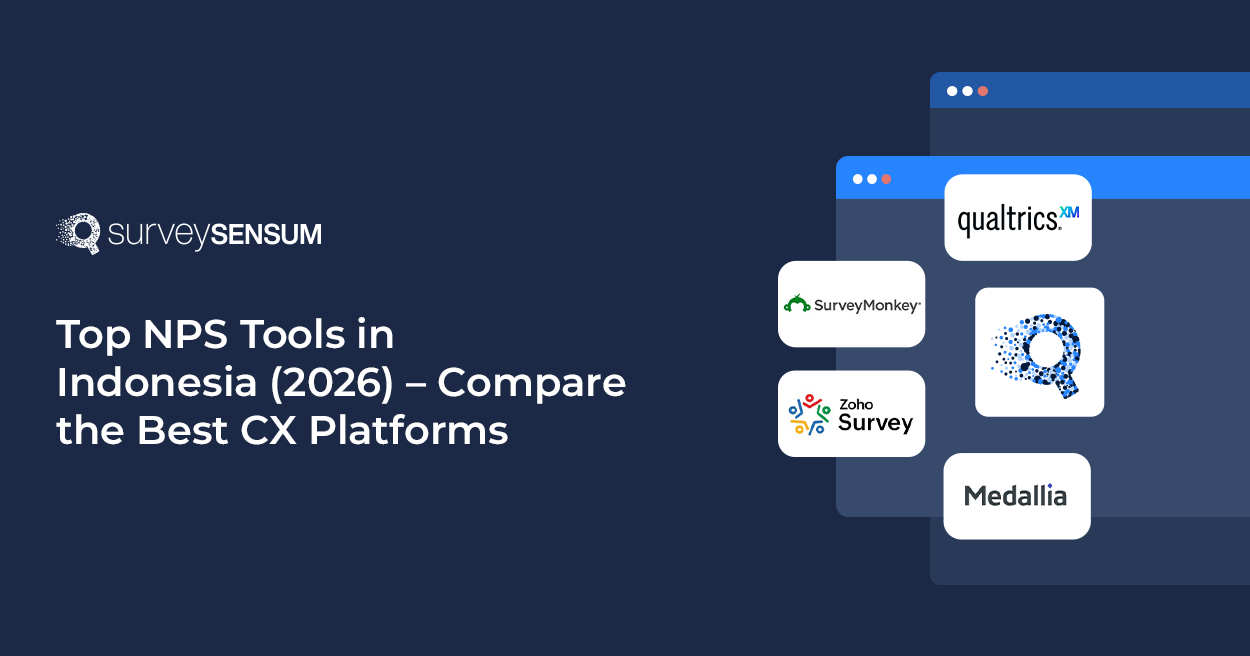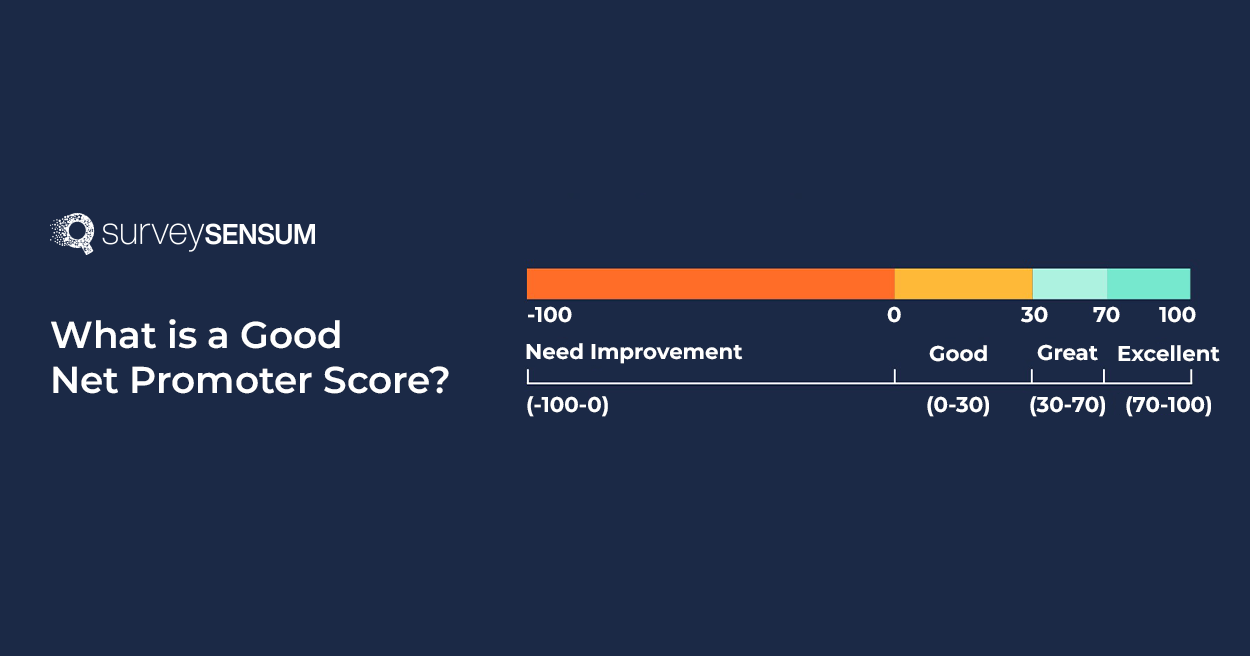

Recently, my colleague Sarah recommended the OnePlus smartphone, which she’s been happily using for over 2 years. Her praise for the sleek design and camera intrigued me, so I decided to explore further.
I started by reading reviews, seeking advice from friends, and checking social media. To my surprise, I found numerous positive reviews and recommendations from delighted OnePlus customers. They shared stories of excellent customer service, speedy issue resolutions, and fantastic phone features.
With this wealth of information, I decided to purchase one, and it’s truly one of the best phones I’ve ever had.
This scenario illustrates how recommendations from friends, colleagues, and online reviews impact our purchasing decisions.
Now, imagine a scenario where these satisfied customers didn’t share their positive experiences. In such a situation, you might have opted for a different brand, potentially missing out on a fantastic product and exceptional customer service, right?
This is where brand advocacy comes into play.
What is Brand Advocacy?
Brand advocacy is when your most satisfied and loyal customers not only love your product or service but also actively promote it to others.
These advocates are your brand’s enthusiastic cheerleaders, who can sway others’ decisions. Having these advocates by your side can be the game-changer your brand needs.
But who can be your brand advocates?
This brings us to the biggest challenge in the brand advocacy process – to identify customers who can be potential brand ambassadors. And that’s why promoters become the gateway.
To effectively identify and categorize your promoters, it’s essential to leverage NPS software. It helps you launch NPS surveys, making it easier to pinpoint customers who genuinely endorse your product and are potential brand ambassadors.
After identifying promoters, the next step is turning them into brand advocates. This involves specific strategies that we’ll discuss in this blog.
Before diving into the strategies for creating brand advocates, let’s first differentiate promoters from advocates.
Differentiating Promoters from Advocates
Many of our customers were confused about promoters and advocates.
Promoters are satisfied and loyal customers who genuinely like your product or service. They might recommend it to friends and family in casual conversations, but they typically don’t go out of their way to actively promote your brand.
On the other hand, advocates take brand loyalty to the next level. These customers are not just happy; they are thrilled with your offering. They enthusiastically share their positive experiences through word-of-mouth, social media, and other channels.
Note: These two terms are commonly used interchangeably, and that causes confusion.
Now that we’ve clarified the difference between promoters and advocates, let’s delve deeper into 9 strategies that you can implement to create brand advocates.
9 Strategies to Turn NPS Promoters into Advocates
After knowing the difference between promoters and advocates you know that your promoters are already satisfied with your product, right?
All you have to do is – GO the extra mile. Yes, now is the time to blow their minds and make them so happy that they’d WANT to tell about you to other people.
To do that, here are the top 9 strategies to implement:
1. Follow up with the Promoters and Turn Customer Feedback into Reviews
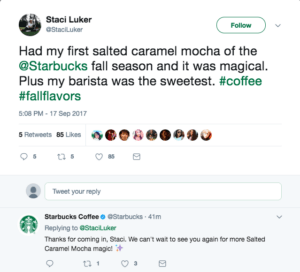
To effectively harness the power of promoters and transform them into enthusiastic brand ambassadors, send them a follow-up question after their NPS feedback. Tell them how much you’d appreciate them sharing their thoughts with others. To do that, consider following the given strategies:
- Thank Promoters: When customers give you positive feedback, thank them and ask if they’d share it with others.
- Gather Feedback: If you’re a startup business, ask for feedback on platforms like Capterra or G2. Provide direct links for convenience with a thank you note.
- Encourage Social Sharing: Request customers to share their thoughts on social media. Consider teaming up with happy clients for joint marketing.
- Reward and Engage: Offer perks like vouchers or discounts to encourage reviews. Show appreciation with a simple thank-you and join discussions in the comments.
And don’t forget to
- Ask Permission: After gathering feedback, ask if they’re okay with their comments being published.
- Be Transparent: Publish all reviews, even if not all are positive, alongside your Net Promoter Score to build trust.
This approach not only gets you more reviews but also builds customer loyalty, enhances your online reputation, and attracts new customers.
2. Personalized Customer Engagement
Personalized communication is the key to nurturing robust customer relationships and improved customer retention. Even your NPS scale question should be personal. When customers feel you understand their needs and preferences, they are more likely to return. In fact, according to a Forbes study, 63% of consumers switch brands because of poor personalization. Thus it’s important to personalize your customer engagement.
Here’s how you can do it:
- Collect Customer Data: Gather information about your customers and organize it using CRM systems.
- Segmentation: Group your customers based on common traits or behaviors.
- Personalized Messages: Send tailored messages, using their names and referencing their past purchases.
- Special Occasions: Celebrate their birthdays and anniversaries with personalized emails offering digital gifts or special offers.
- Relationship Milestones: Acknowledge your history with customers by sending greetings or even inviting high-value customers to lunch or dinner.
Identify Promoters with an Effective NPS Program with SurveySensum
3. Encourage Multiple Purchases
Do you know it takes 5 purchases on average for customers to become loyal to a brand?
Now that your customers have made multiple purchases and become promoters, it’s time to encourage them to buy from you again. Here are some strategies to help you with that:
- Retargeting: Keep your brand on their minds with ads that offer discounts as they surf the web.
- Personalized Recommendations: Suggest products based on their past purchases, improving their shopping experience and increasing the chance of repeat business.
- Email Campaigns: Create email campaigns with exclusive discounts for returning customers. Don’t forget to send them special offers on their birthdays to boost loyalty.
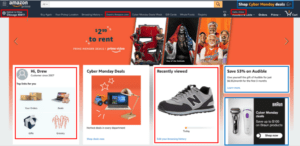
Brand example: Amazon excels at fostering customer loyalty. They employ these strategies, provide an exceptional shopping experience, and offer services like one-day delivery, and Amazon Prime. They also encourage customers to review their product to increase WOM. This turns satisfied customers into enthusiastic brand advocates who readily endorse Amazon to others.
4. Creating a Well-Crafted Loyalty Program
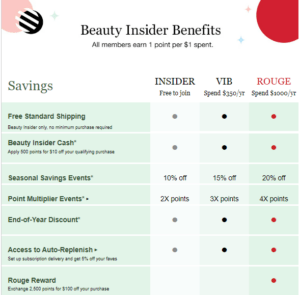
Have you heard about Beauty Insider?
Well, Beauty Insider is Sephora’s loyalty program that seamlessly integrates with Sephora’s brand identity, which revolves around offering a diverse and premium beauty shopping experience.
It offers a range of meaningful rewards, including
- free product samples,
- personalized makeup consultations,
- early access to new product launches,
- exclusive offers, and
- experiences like limited-edition products and members-only events.
You get all just for being a part of it. This is how Beauty Insider keeps its members excited.
But here’s the real beauty of it: this program doesn’t just reward you; it rewards your LOYALTY. No wonder 70% of consumers are more likely to recommend a brand if it has an attractive loyalty program like this.
By taking inspiration from successful loyalty programs like Sephora’s, you can tap into the magic of customer loyalty, transforming satisfied buyers into enthusiastic brand advocates who actively promote their products and services.
5. Referral and Affiliate Marketing Programs
Referral and affiliate marketing programs generate 3 to 5 times higher conversion rates than any other channel.
Surprising, right?
Well, many businesses are leveraging these marketing programs.
Take the HubSpot Partner Program for example. In this program, HubSpot’s loyal users and trusted agencies become partners.
How?
They do this by introducing other businesses to HubSpot’s software solutions. When one of their referrals becomes a HubSpot customer, these partners earn a commission. And this motivates them to passionately promote HubSpot’s excellent services in their networks, fostering a strong network of referral clients.
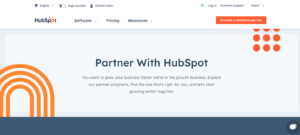
This is how they encourage users and agencies to vigorously champion HubSpot’s services within their networks.
Now, you must be thinking about your business.
So, here’s how you can implement a referral program of your own:
- Reward customers with points or cash-equivalent prizes for each successful referral they make.
- Create a referral link and landing page link that advocates can easily share with their friends.
- Develop a tiered rewards system, offering additional points or prizes for reaching specific referral milestones, like every five referrals.
- To streamline your referral program, consider integrating affiliate software to manage links efficiently and maximize the impact of your advocacy efforts.
- Explore alternative methods for boosting your income or seek out a side gig to augment your earnings. A fantastic approach to supplementing your finances is by utilizing money-generating or passive income applications, which can assist in saving money on your regular expenditures.
This incentivizes advocates to continue promoting your brand to others, leading to more conversions and brand advocates. Additionally, employing effective affiliate link management can streamline the process and maximize the impact of your referral program.
6. Make it EASY
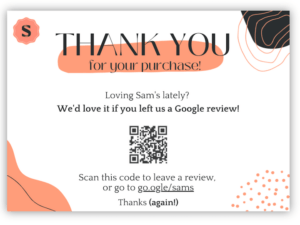
Image Source
The SIMPLER you make the process for your customers, the more likely they are to actively promote your brand.
To achieve this,
- Send them a template for giving reviews or testimonials and ask their permission.
- After a repeat purchase, add a ‘Share’ button to make it effortless for customers to showcase their purchase on social media, allowing their friends to see it.
- Share pre-written social media posts with promoters so they can easily post on their channels.
- Ask their favorite team member from your company to request a testimonial, making the process more personal and engaging.
This is how you can simplify the entire process. and increase the likelihood of your customers actively sharing their positive experiences with others.
7. Create Customer Success Stories and Case Studies
To turn your promoters into advocates, create customer success stories and case studies. It is most effective when users share how your product helps them achieve their KPIs or positively impacts their bottom line.
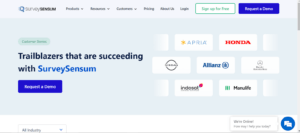
Here’s how you can do this:
- Create comprehensive customer success stories or case studies based on the experiences of your advocates. These personal narratives carry exceptional credibility and influence because they provide a real-life account of the advantages your product brings to customers. This can be in short narratives or videos.
This not only enhances their advocacy but also inspires promoters who can become potential advocates among your customer base.
Just like SurveySensum, you can also showcase real-life success stories. With this, you not only validate your product’s value but also inspire other potential advocates among your customer base. As they can see the measurable impact your product has had on their peers. This approach effectively leverages the power of storytelling to transform satisfied customers into enthusiastic brand advocates.
8. Employ Influentials to Target Social Media
Influencer marketing has gained significant traction, with 74% of marketers seeing it as a crucial element of brand advocacy.
So why not leverage influencer marketing?
To execute this strategy effectively you must:
- Partner with Influential Figures: Team up with key influencers in your field. They have dedicated followers who trust their recommendations, making them authentic advocates for your brand.
- Use Hashtags Smartly: Create and use relevant hashtags on social media, including popular trends. This boosts your brand’s visibility and encourages happy customers to share their experiences widely.
This is how you can significantly amplify your brand’s visibility and reach on social media platforms. This approach encourages your satisfied customers to share their positive experiences and endorsements more widely, thereby enhancing your brand advocacy efforts.
9. Hold Round Table Discussions with Promoters
By hosting round table discussions with promoters you can unveil insights that may not surface in individual feedback sessions. This builds a community where customers can share tips and expertise, enhancing brand advocacy.
To initiate these discussions effectively, consider focusing on the following:
- Ask about WHAT they used before your brand. This helps you understand their journey and WHY they switched to you.
- ENCOURAGE them to share any clever tips they’ve discovered while using your product or service. These tips can benefit others.
- Talk about the SPECIFIC features they love in your product or service. This helps you learn what makes your brand special to them.
These interactions with promoters can yield rich content for guides, FAQs, blog posts, and more. Also, these round table discussions can take multiple forms, such as video conferences, office visits, or even in-person gatherings.
But, ALWAYS express your gratitude to promoters for their participation, and consider offering incentives as a token of appreciation.
With these 9 strategies on how to create brand advocates, we have reached our final destination.
Conclusion
Implement these given strategies and turn your NPS promoters into brand advocates now. This is the key to long-term business growth because advocates are your passionate supporters. They spread the word about your brand, driving more customers and building trust – indeed a valuable asset!
So, nurture these advocates and create a positive ripple effect, influencing others positively. To make this happen, use effective NPS software tools, like SurveySensum. With this tool, you can harness the power of customer loyalty and word-of-mouth marketing, boosting your brand’s success.
Frequently Asked Questions
To turn customers into brand advocates, focus on delivering exceptional experiences, exceeding expectations, and building genuine relationships. Encourage advocacy through loyalty programs, referral incentives, and engaging with customers on social media.
While both promoters and advocates are satisfied customers who are likely to recommend a brand, advocates go a step further. Advocates actively promote and defend the brand, sharing positive experiences and influencing others through word-of-mouth, social media, and other channels.
After you calculate NPS from the customer responses that you recieve, you can compare your score with others. NPS benchmarks by industry provide comparative data on different types of NPS across different sectors. These benchmarks help companies assess their performance in terms of customer loyalty and satisfaction relative to industry standards, enabling them to identify areas for improvement and strategic opportunities.








